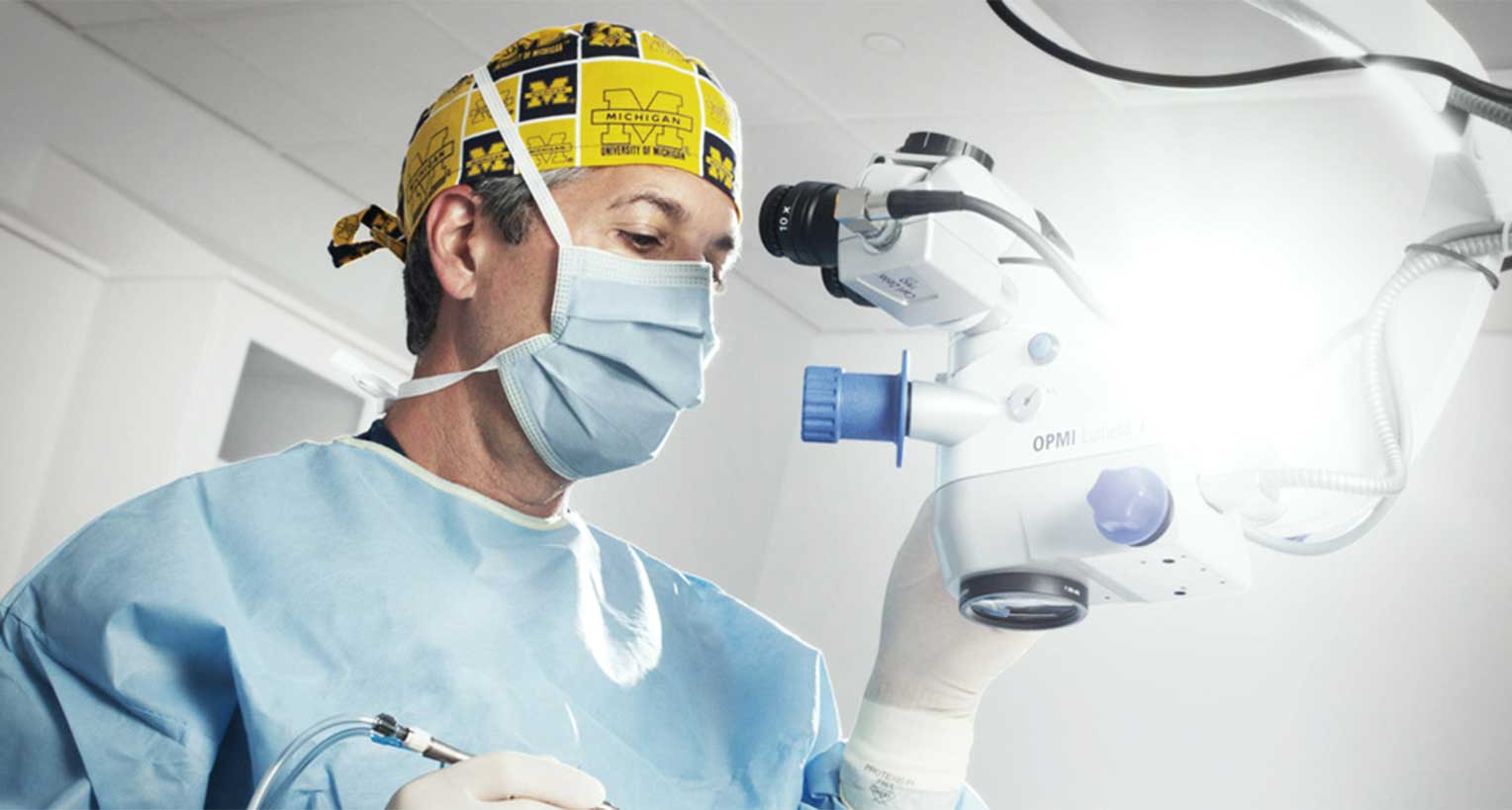Corneal Cross-Linking: Treatment for Keratoconus
Corneal Cross-Linking Treatment
Your cornea, the clear front window of the eye, allows your eye to focus light to make images out clearly. But when your cornea starts to thin or bulge into a cone, your vision becomes distorted. This building or thinning of the cornea is known as keratoconus, and it can make even the most routine task difficult.
You don’t have to live with poor vision from keratoconus. A procedure used to treat the disease called corneal cross-linking has a strong track record of success. Also known as collagen cross-linking, several studies show that cross-linking may prevent further vision loss in over 95% of patients and improves vision in 60-81% of patients treated. Continue reading to learn more about corneal cross-linking and find out if it’s the right option for you.
What is Keratoconus?
Keratoconus occurs when your cornea becomes thin, weak, and irregularly shaped. There is no definitive cause for keratoconus, but a common finding is the loss of collagen. When your cornea takes on an irregular shape, you may notice visitation distortions, leading to difficulty performing normal activities.
Common keratoconus symptoms include:
- Blurred or distorted vision
- Increased sensitivity to bright light and glare
- Difficulty with night driving
- Frequent changes in eyeglass prescriptions
- Sudden worsening or clouding of vision
How Does Corneal Cross-Linking Work?
To maintain its strength and shape, normal corneas have cross-links between their collagen fibers. In an eye with keratoconus, the cornea weakens and has too few cross-links left. As a result of a weakened structure, your cornea bulges out.
The purpose of corneal cross-linking is to add cross-links so your cornea’s shape stays strong, stable, and capable of holding its shape. The cross-linking process results in better focusing power and helps to stop the thinning process and further vision loss.
The procedure, if done on both eyes at once, takes about an hour and a half. However, some patients elect to have one eye done at a time, which takes about an hour.
Can Anyone With Keratoconus Get Corneal Cross-Linking?
While we want to help you find a solution for keratoconus, some patients are not suitable for corneal cross-linking. Corneas that are too thin or too scarred may prevent you from receiving the procedure. The best way to find out if you’re a candidate for corneal cross-linking is to schedule an appointment. During your appointment, we can determine if corneal cross-linking is right for you.

Scleral Lenses for Keratoconus
If your corneas are unsuitable for cross-linking, another option called scleral lenses might be your solution. Scleral lenses can sit in front of your cornea without touching it and creates a smooth, round surface to correct your vision. And since the lens doesn’t sit on your cornea, this solution is great for patients with dry eyes. To find out more information about scleral lenses for keratoconus treatment, please schedule an appointment.
Should Relatives Be Tested for Keratoconus?
Michigan Eye Institute can perform corneal topography testing to map the surface of your cornea in detail. This helps our ophthalmologists and optometrists accurately assess your eyes for the best possible results during cataract surgery or laser vision correction.
Additionally, corneal topography can detect corneal diseases, deformities, and interior astigmatism.
Make Your Appointment at MEI
Whether you’re noticing problems with your vision related to keratoconus or are curious about your eye health, one of our expert eye doctors can help. With multiple locations to choose from, we ensure you have easy, convenient access to high-quality care. Schedule an appointment today, and be prepared for a warm greeting when you arrive.



